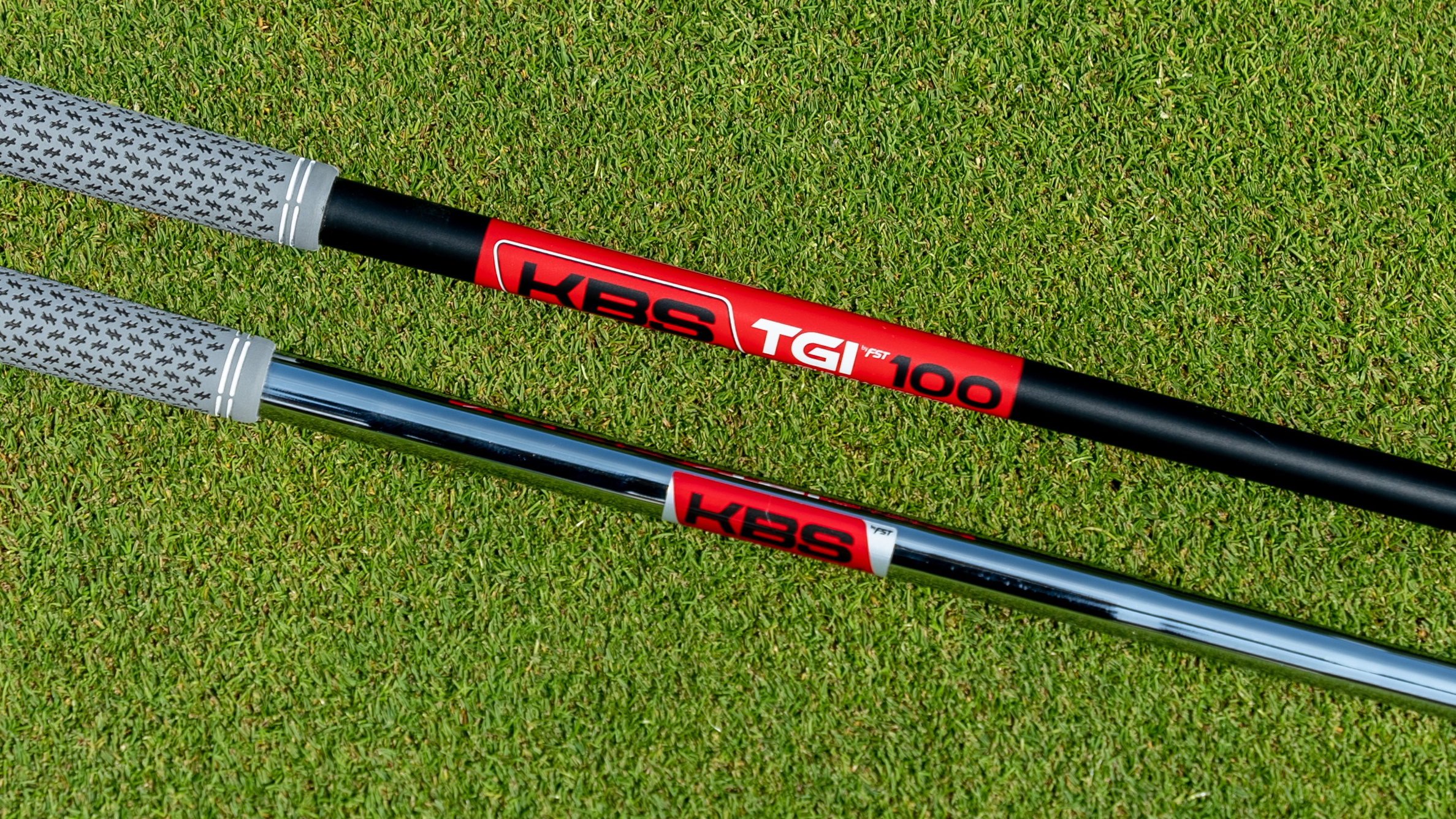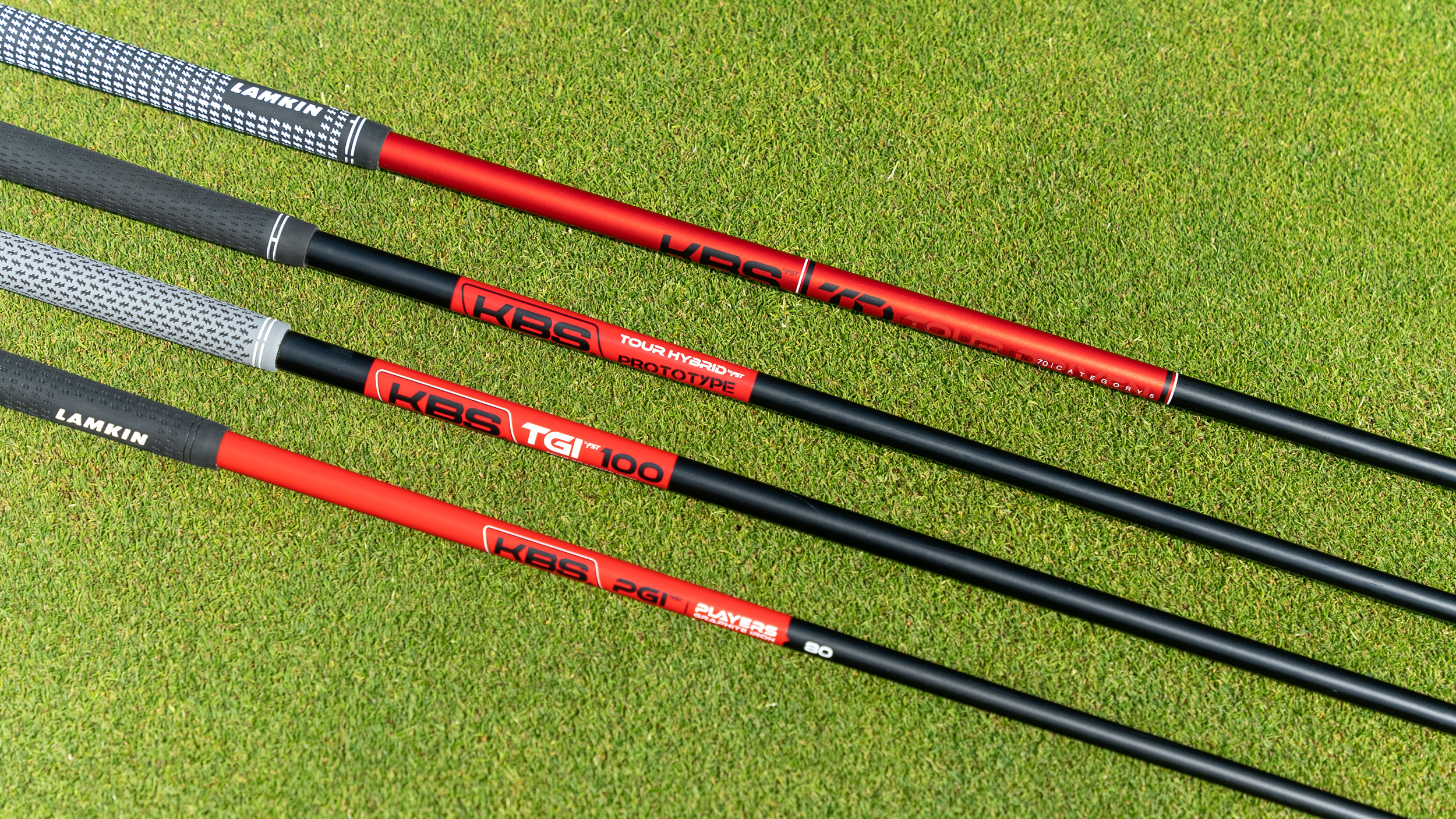The Advantages Of Graphite Shafts Over Steel
Would your performance improve with graphite shafts in your irons over steel?


Golf Monthly created this content as part of a paid partnership with KBS. The written content of this article is entirely independent and solely reflects the editorial opinion of Golf Monthly.
The Advantages Of Graphite Shafts Over Steel
While steel shafts remain the dominant choice in the irons of golfers across the handicap spectrum, graphite-shafted alternatives are certainly gaining traction. Historically, graphite shafts were seen as the soft and inconsistent substitute for lady and senior golfers seeking an alternative to heavy steel shafts. But as Paul Steels from KBS explains in the video above, golfers of every level should consider graphite shafts in their irons.
The first benefit golfers will experience from graphite shafts is more speed. Nearly every golfer in the world uses a graphite shaft in their driver for the simple reason that it is lighter than steel and therefore can be swung faster, achieving more clubhead speed and distance. With the recent advances in graphite material and technology, this extra distance has come without affecting control or consistency and these benefits can easily be transferred into irons. Graphite shafts can offer the same amount of stiffness as steel, which makes them suitable for stronger players as well as high handicappers, but in a lighter weight.
Graphite shafted irons also feel smoother and easier to swing than steel while also putting less strain on the body because of the significant reduction in vibrations that come up into the hands through the shaft at the point of impact. This is why golfers that suffer with long-standing wrist or arm pain or injuries should consider a switch into graphite.

KBS offers a graphite shaft option in wedges, irons, hybrids and drivers
Graphite shafts of today are also more versatile. Material can be layered specifically where it is needed to adjust the kick point, which will influence the launch angle. Typically, graphite shafts will launch the ball higher than steel, which is why they remain suitable for lady and senior golfers. But high speed players seeking a penetrating flight can also experience this with graphite because of how stiff it can be made.
Graphite shafts aren’t limited to just drivers and irons either. KBS, for example, offer a wedge, fairway wood and hybrid graphite shaft so golfers can benefit from it right through the bag on every long-game shot.
Get the Golf Monthly Newsletter
Subscribe to the Golf Monthly newsletter to stay up to date with all the latest tour news, equipment news, reviews, head-to-heads and buyer’s guides from our team of experienced experts.
While it is true that graphite shafts tend to cost a little more than their steel counterparts, there’s a strong case to be made that the investment is worth it in the long run because of how it allows golfers to maintain or even increase their clubhead speed, practice for longer and not lose out on control of dispersion.

Joel has worked in the golf industry for over 15 years covering both instruction and more recently equipment. He now oversees all equipment and video content at Golf Monthly, managing a team of talented and passionate writers and presenters in delivering the most thorough and accurate reviews, buying advice, comparisons and deals to help the reader or viewer find exactly what they are looking for.
One of his career highlights came when covering the 2012 Masters he got to play the sacred Augusta National course on the Monday after the tournament concluded, shooting a respectable 86 with just one par and four birdies. To date, his best ever round of golf is a 5-under 67 back in 2011. He currently plays his golf at Burghley Park Golf Club in Stamford, Lincs, with a handicap index of 3.1.
Joel's current What's In The Bag?
Driver: Titleist GT3, 9°, Fujikura Ventus Black 6 S shaft.
Fairway wood: Titleist TSR3, 15°
Hybrid: Titleist TSi2, 18°
Irons: Titleist T150, 4-PW
Wedges: Titleist Vokey SM10, 50°, 54° and 58°
Putter: LAB Golf DF3
Ball: 2025 Titleist Pro V1x
-
 JM Eagle LA Championship Prize Money Payout 2025
JM Eagle LA Championship Prize Money Payout 2025The LPGA Tour heads to California for the JM Eagle LA Championship, where the largest prize money payout of the season so far is on the table
By Mike Hall
-
 Corales Puntacana Championship Prize Money Payout 2025
Corales Puntacana Championship Prize Money Payout 2025The PGA Tour’s latest opposite field event features an attractive prize money payout and some former champions in the field
By Mike Hall